Passenger List Frequently Asked Questions (FAQs)
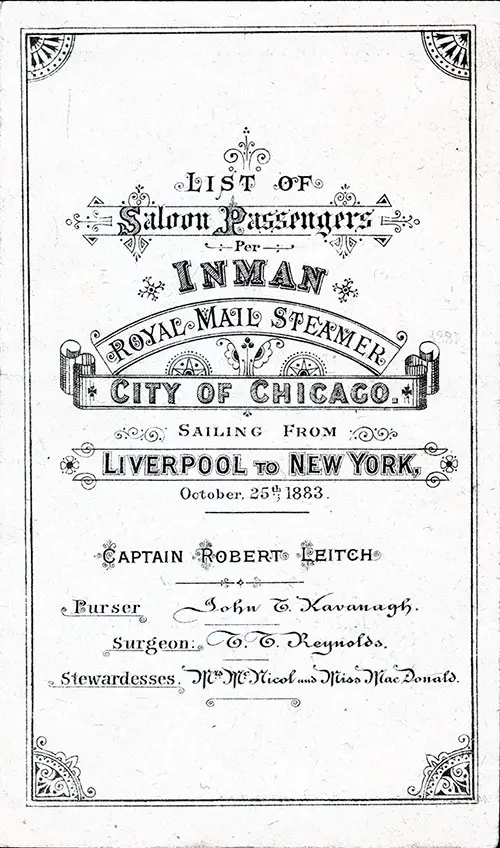
Passenger List FAQs
Passenger lists are more than simple rosters of names — they are windows into migration, travel, and culture at sea. This FAQ hub gathers the most common questions asked by genealogists, historians, collectors, and students. From understanding the difference between passenger manifests and souvenir lists, to exploring design, ephemera, and even Prohibition’s impact on ocean travel, this section provides both context and guidance. Whether you’re tracing an ancestor, studying social history, or evaluating the value of maritime memorabilia, these answers will help you make the most of the GG Archives’ collection of nearly 2,000 passenger lists.
Table of Contents
- Byron Company Steamship & Ocean Liner Photographs
- Classification of Passengers
- Designations (Prefix) of Steamships
- European Ports of Departure
- Passenger List Collections
- Passenger Lists Organization
- Difference Between Passenger Manifests and Passenger Lists
- What Are Passenger Lists?
- The Quandary of Passenger List Transcriptions
- Where Are the Passenger Lists?
- Steamship Passage Tickets
- Recovery of the Head Tax
- Student Travel Organizations & Lines (1920s–1930s)
- Ephemera & Design in Passenger Lists
- The Value of Ocean Travel Ephemera
- Souvenir Ephemera of Ocean Travel
- Prohibition and Ocean Liners
- Ports of Call City Codes
=== Foundations ===
📜 Byron Company Steamship & Ocean Liner Photographs
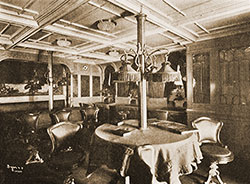
Byron Company Steamship & Ocean Liner Photographs
Discover the history of Joseph and Percy Byron, pioneering freelance photographers of New York City and transatlantic steamships. Learn how their maritime photographs—many now in the public domain—document ocean liner history and remain essential to genealogists, historians, and students.
📑 What Are Passenger Lists?
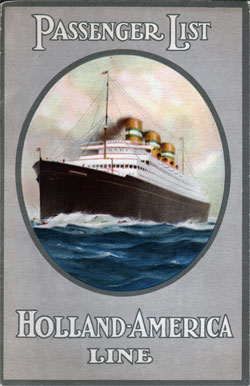
Passenger lists weren’t just rosters of names — they were souvenirs of the voyage, often beautifully designed and filled with details about fellow travelers, ship officers, and daily life at sea. Steamship companies used them as subtle advertising, while passengers treasured them as keepsakes. Today, they are invaluable to genealogists, historians, and collectors, offering insight into migration, society, and ocean travel culture.
Difference Between Passenger Manifests and Passenger Lists
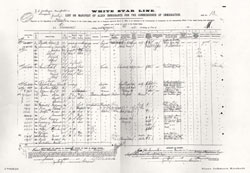
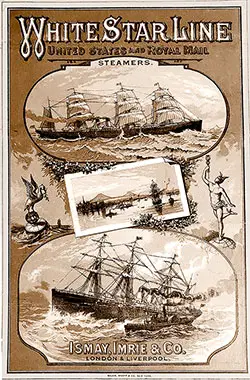
Difference Between Passenger Manifests and Passenger Lists
Passenger manifests were official government records, created for immigration control, documenting details like age, occupation, birthplace, and final destination. Passenger lists, by contrast, were souvenirs issued by the steamship lines—often beautifully designed and prized as keepsakes. Together, they provide both the administrative facts and the cultural context of a voyage.
👉 Learn how passenger manifests and passenger lists differ — and why both are vital for researchers.
Passenger List Collections

The GG Archives preserves nearly 2,000 passenger lists from the 1880s–1960s. Organized by line, ship, and voyage date, these collections reveal the stories of migration, travel, and leisure at sea.
Passenger Lists Organization
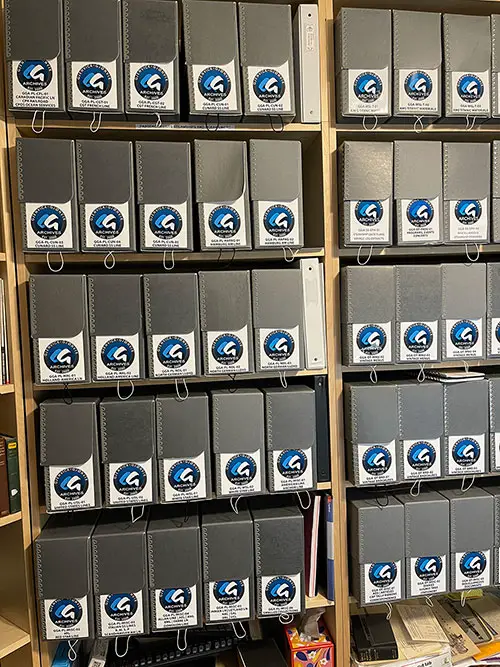
The GG Archives passenger list collection numbers about two thousand, dating from the 1880s through the 1950s. Over half of these have been transcribed and are available online to researchers and genealogists.
=== Context & Use ===
Classification of Passengers
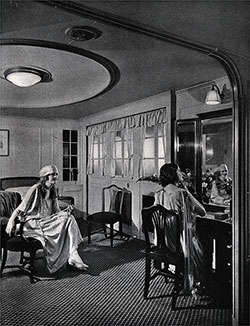
Passenger lists were more than simple rosters—they reflected social class divisions, immigration patterns, and marketing strategies. This FAQ explains how steamship lines classified passengers between 1880 and 1960, why First and Second Class travelers dominated souvenir lists, and what this means for genealogists, historians, and students today.
Designations (Prefix) of Steamships
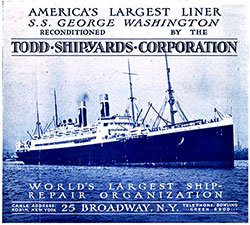
Designations (Prefix) of Steamships
Prefixes are short codes placed before a ship’s name to indicate propulsion, role, or special status. In the late 19th and early–mid 20th centuries they were common in timetables, passenger lists, and press reports—but not always used consistently. Understanding them helps researchers interpret lists correctly and avoid false assumptions about a vessel.
European Ports of Departure
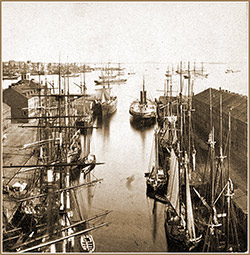
Explore the major European ports of departure used by immigrants traveling to the United States and Canada between the 1880s and 1954. Includes key ports in the UK, Ireland, Scandinavia, Germany, France, Italy, and the Benelux countries—essential for genealogists, historians, and students of migration and ocean travel.
📜 Where Are the Passenger Lists?
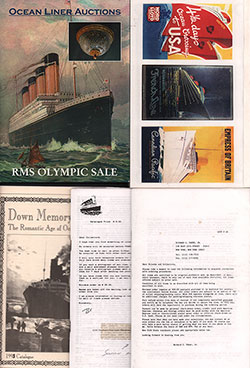
📜 Where Are the Passenger Lists?
👉 Learn why so few passenger lists remain — and why preserving them matters for future generations.
The Quandary of Passenger List Transcriptions
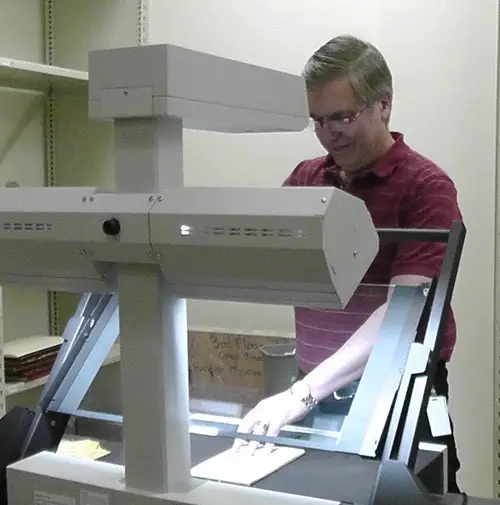
The Quandary of Passenger List Transcriptions
We receive the most mail from people regarding transcriptions of passenger lists and more specifically, when they will become available. One little nasty detail popped up - they refer to it as "economy of scale."
=== Travel Documents & Rules ===
📌 Everything You Need To Know about Steamship Passage Tickets
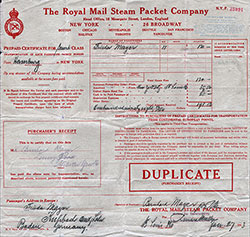
Everything You Need To Know about Steamship Passage Tickets
📌 Explore the essentials of steamship travel during the golden age of transatlantic crossings. From booking tips and return ticket policies to vessel comparisons and onboard expectations, this historical guide is perfect for genealogists, teachers, and students studying immigration and maritime travel.
💵 Recovery of the Head Tax
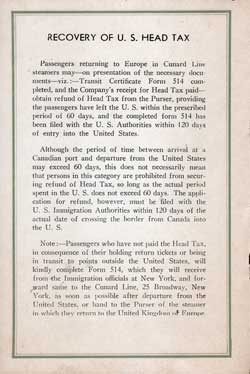
From 1882 to the 1950s, most passengers entering the United States paid a Head Tax — usually $8 by the 1930s. But travelers leaving again within 60 days could request a refund through a special Transit Certificate (Form 514). These rules appear in many passenger lists and can reveal whether someone was immigrating or simply visiting.
🔎 Ports of Call Codes
🔎 Looking for city codes sometimes used on passenger list summaries? See our Ports of Call Codes Reference
=== Special Topics ===
What Were the Student Travel Organizations and Lines 1920s-1930s?
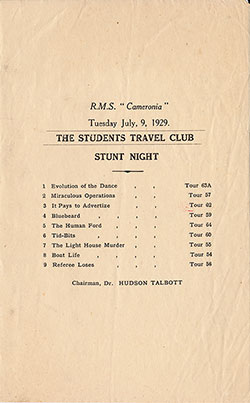
What Were the Student Travel Organizations and Lines 1920s-1930s?
This question is a fun rabbit hole. Here’s a year-by-year map of documented student travel voyages & patterns in the 1920s–1930s, grouped by steamship line. It’s not every single sailing (records are spotty). Still, these are the clearest signals of who dominated the niche and when.
🎨 Ephemera & Design in Passenger Lists
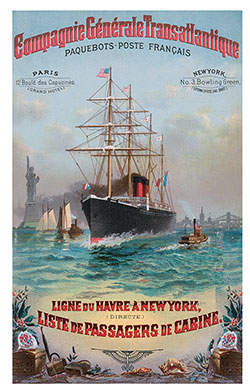
🎨 Ephemera & Design in Passenger Lists
👉 Explore the stunning design legacy of passenger lists across the golden age of ocean travel.
💰 The Value of Ocean Travel Ephemera
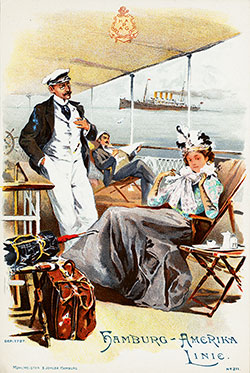
💰 The Value of Ocean Travel Ephemera
👉 Learn what makes ocean liner ephemera valuable — and why their stories matter even more than their price tags.
🧳 Souvenir Ephemera of Ocean Travel

🧳 Souvenir Ephemera of Ocean Travel
👉 Browse the world of ocean travel souvenirs and discover why these ephemeral items remain so enduring.
📜 Prohibition and Ocean Liners
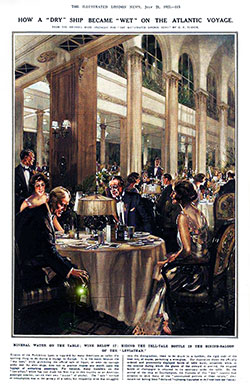
📜 Prohibition and Ocean Liners
👉 Explore how Prohibition changed the culture, marketing, and passenger experience aboard ocean liners.
⚠️ About Accuracy in Historical Records Research Tip
Context. The GG Archives presents passenger lists as faithfully as possible to the original documents. While OCR is generally accurate, portions of these collections—especially image captions and some transcriptions—are typed by hand and may include typographical or spelling variations. The original manifests themselves also contained clerical inconsistencies (names recorded phonetically, mid-voyage corrections, etc.).
What this means for your research:
- Search variant spellings of names (e.g., “Schmidt/Schmitt/Smith,” “Giuseppe/Joseph”).
- Cross-reference with immigration cards, passport applications, naturalization files, city directories, and newspapers.
- Treat manifests as primary sources with historical quirks—use them alongside corroborating records.
- For place names, consider historical borders and language variants (e.g., Danzig/Gdańsk, Trieste/Trst).
How to cite. When quoting a name from a manifest, consider adding [sic] for obvious misspellings and include a note such as “spelling as printed in original passenger list.”
Need help? If you spot a likely transcription error in captions, feel free to contact us with the page URL and a brief note—we love community input. 🙏
Curator’s Note
For over 25 years, I've been dedicated to a unique mission: tracking down, curating, preserving, scanning, and transcribing historical materials. These materials, carefully researched, organized, and enriched with context, live on here at the GG Archives. Each passenger list isn't just posted — it's a testament to our commitment to helping you see the people and stories behind the names.
It hasn't always been easy. In the early years, I wasn't sure the site would survive, and I often paid the hosting bills out of my own pocket. But I never built this site for the money — I built it because I love history and believe it's worth preserving. It's a labor of love that I've dedicated myself to, and I'm committed to keeping it going.
If you've found something here that helped your research, sparked a family story, or just made you smile, I'd love to hear about it. Your experiences and stories are the real reward for me. And if you'd like to help keep this labor of love going, there's a "Contribute to the Website" link tucked away on our About page.
📜 History is worth keeping. Thanks for visiting and keeping it alive with me.
